Socio-ecological Model
The Ecological Model explains the occurrence of violence against women and helps identify potential prevention strategies. According to Glanz, Rimer, and Viswanath in Health Behavior and Health Education: Theory, Research, and Practice (2008), “This model proposes that individual, interpersonal, community, organizational, and societal factors should be taken into account when planning and implementing health promotion interventions, because they have direct and indirect influences on lifestyle, behavior choices, and health.” (Israel, Checkoway, Schulz, and Zimmerman, 1994; McLeroy, Bibeau, Steckler, and Glanz, 1988).
From the CDC:
The CDC’s model is constructed with four levels: individual, relationship, community, and society. Primary prevention strategies that work across these different levels and include multi-level programs are the most effective in changing behavior.
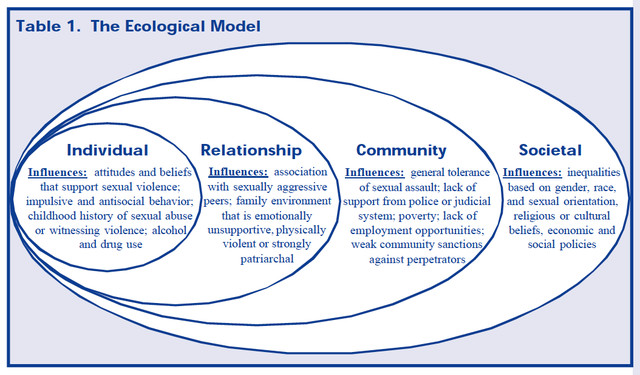 Image source: http://www.cdc.gov/violenceprevention/pdf/SVPrevention-a.pdf
Image source: http://www.cdc.gov/violenceprevention/pdf/SVPrevention-a.pdf
The CDC Violence Prevention Division clarifies the four main levels:
Individual
The first level identifies biological and personal history factors that increase the likelihood of becoming a victim or perpetrator of violence. Some of these factors are age, education, income, substance use, or history of abuse. Prevention strategies at this level are often designed to promote attitudes, beliefs, and behaviors that ultimately prevent violence. Specific approaches may include education and life skills training.
Relationship
The second level examines close relationships that may increase the risk of experiencing violence as a victim or perpetrator. A person’s closest social circle-peers, partners and family members-influences their behavior and contributes to their range of experience. Prevention strategies at this level may include mentoring and peer programs designed to reduce conflict, foster problem solving skills, and promote healthy relationships.
Community
The third level explores the settings, such as schools, workplaces, and neighborhoods, in which social relationships occur and seeks to identify the characteristics of these settings that are associated with becoming victims or perpetrators of violence. Prevention strategies at this level are typically designed to impact the climate, processes, and policies in a given system. Social norm and social marketing campaigns are often used to foster community climates that promote healthy relationships. Building collaborative partnerships may also be part of changing community.
Societal
The fourth level looks at the broad societal factors that help create a climate in which violence is encouraged or inhibited. These factors include social and cultural norms. Other large societal factors include the health, economic, educational and social policies that help to maintain economic or social inequalities between groups in society.
Specific Types of Violence PreventionThe CDC’s Veto Violence website includes social ecological models for specific types of violence prevention including child abuse and neglect, intimate partner violence, sexual violence and youth violence.
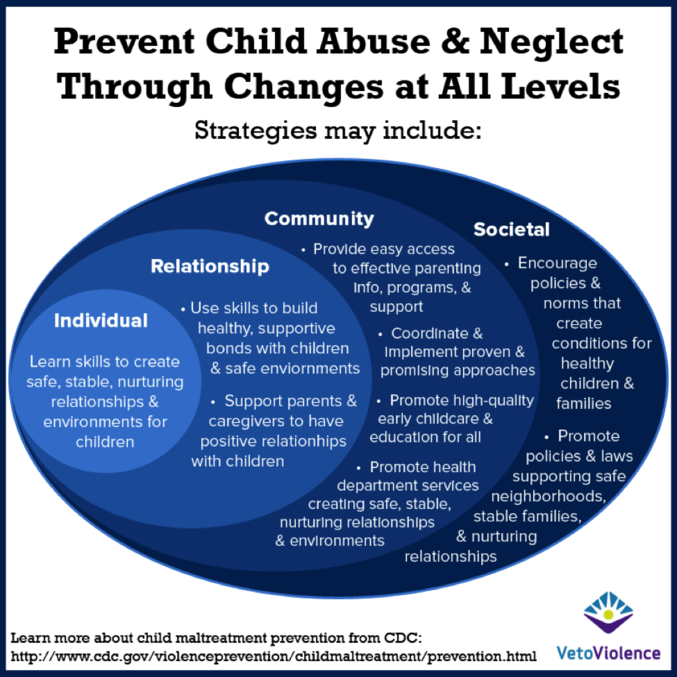 Image Source: http://vetoviolence.cdc.gov/index.php/violence-prevention-basics-the-social-ecological-model/
Image Source: http://vetoviolence.cdc.gov/index.php/violence-prevention-basics-the-social-ecological-model/
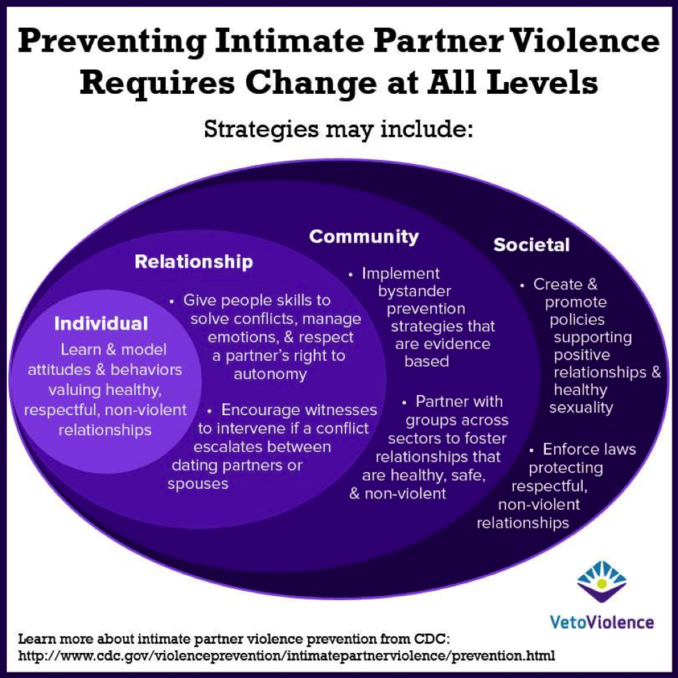 Image Source: http://vetoviolence.cdc.gov/index.php/violence-prevention-basics-the-social-ecological-model/
Image Source: http://vetoviolence.cdc.gov/index.php/violence-prevention-basics-the-social-ecological-model/
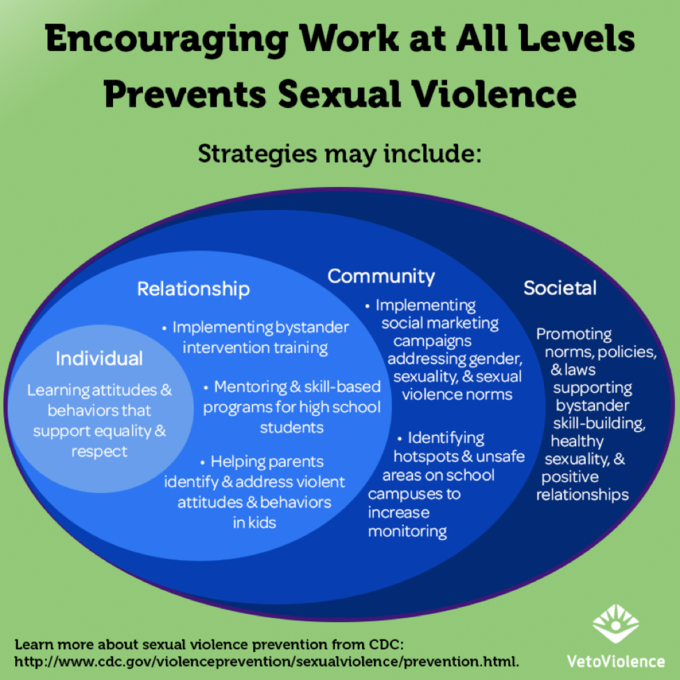 Image Source: http://vetoviolence.cdc.gov/index.php/violence-prevention-basics-the-social-ecological-model/
Image Source: http://vetoviolence.cdc.gov/index.php/violence-prevention-basics-the-social-ecological-model/
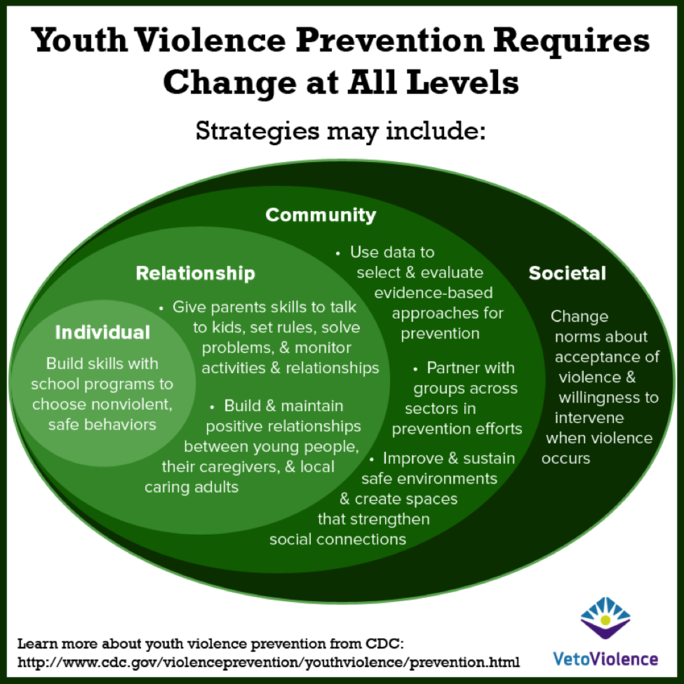 Image Source: http://vetoviolence.cdc.gov/index.php/violence-prevention-basics-the-social-ecological-model/
Image Source: http://vetoviolence.cdc.gov/index.php/violence-prevention-basics-the-social-ecological-model/
From Black Women’s Blueprint:
Black Women’s Blueprint published an expanded, culturally specific socio-ecological model. The expanded layers include a structural and historical analysis to violence, and an environmental level and spiritual through-line are in-development. Read more from the Black Women’s Blueprint website and the full document here.
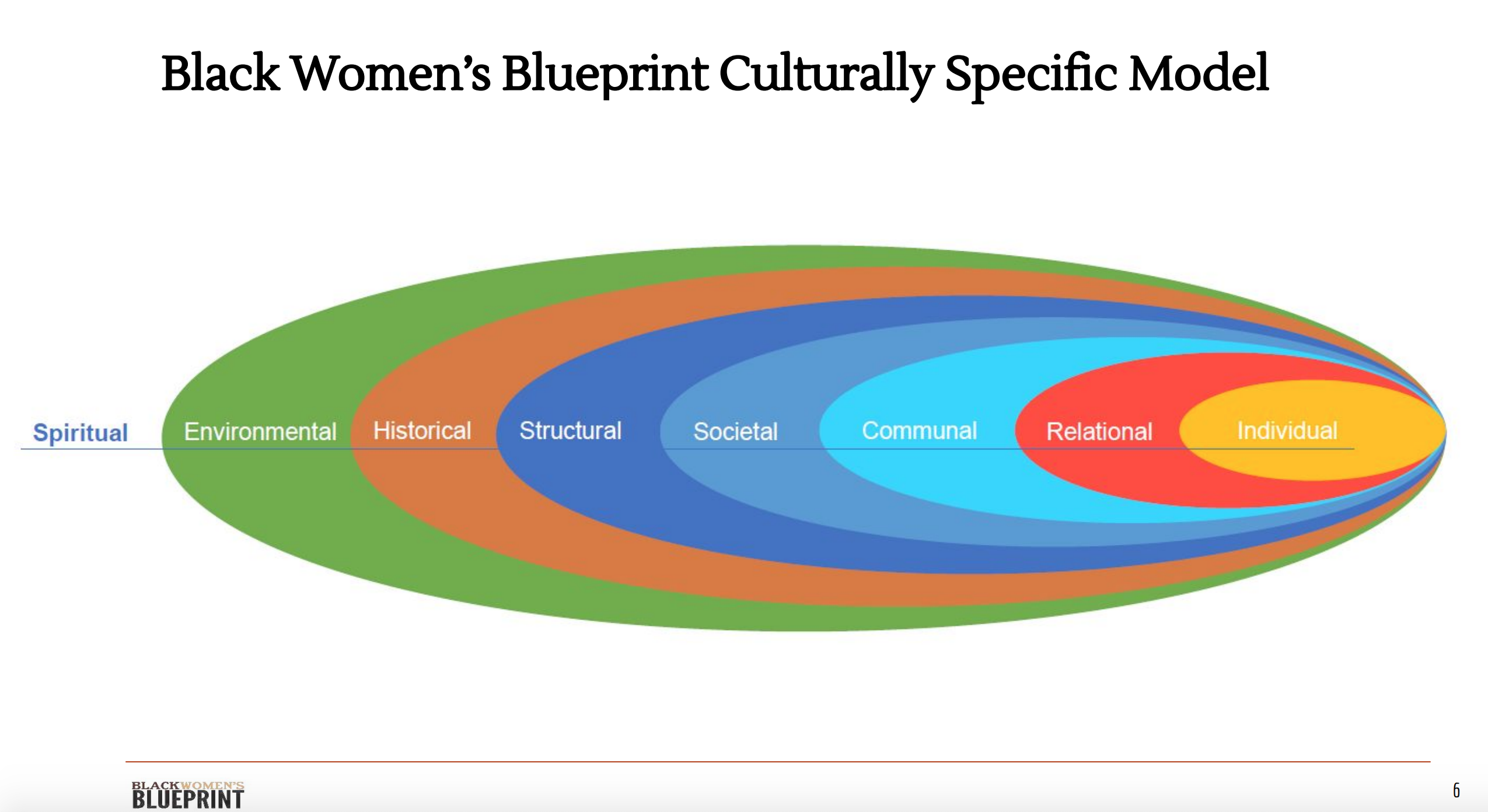
From other sources:
Others, including Glanz, Rimer, and Viswanath, include a fifth level of the social ecology: the institutional level. The institutional level includes characteristics and formal and informal rules of social institutions and organizations. These factors could include organizational policy, gender makeup of organizational leadership, exclusion of a group of people from participating in a social institution such as marriage or public school, etc.
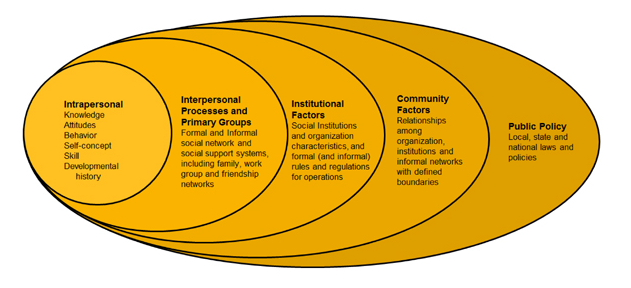 Image Source: https://www.acha.org/HealthyCampus/Implement/Ecological_Model/HealthyCampus/Ecological_Model.aspx?hkey=f5defc87-662e-4373-8402-baf78d569c78
Image Source: https://www.acha.org/HealthyCampus/Implement/Ecological_Model/HealthyCampus/Ecological_Model.aspx?hkey=f5defc87-662e-4373-8402-baf78d569c78
References
- Dahlberg LL, Krug EG. Violence-a global public health problem. In: Krug E, Dahlberg LL, Mercy JA, Zwi AB, Lozano R, eds. World Report on Violence and Health. Geneva, Switzerland: World Health Organization; 2002:1–56. Available at http://www.cdc.gov/violenceprevention/overview/social-ecologicalmodel.html
- Heise, Lori. L (1998) Violence Against Women: An Integrated, Ecological Framework, Violence Against Women, Vol. 4, No. 3, 262-290
- CDC Description of Social Ecological Model as applied to violence prevention
- WHO The World report on violence and health (2002)
- CDC, Sexual Violence Prevention: Beginning the Dialogue
